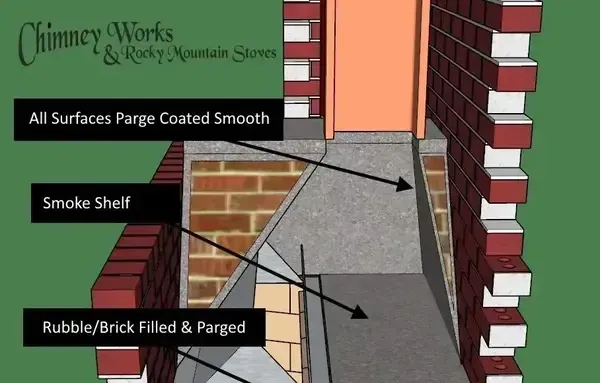
Chimney 101: Smoke Chamber
Smoke Chamber
The smoke chamber is above the firebox and damper and is shaped like an upside-down funnel. Its purpose is to help the smoke move into the chimney while not causing any backdraft. Sloping masonry walls in the smoke chamber are part of good fireplace design.
Parging
Raw masonry creates turbulence when smoke enters the smoke chamber. The less turbulence smoke encounters, the easier it will find its way up a chimney. In order to reduce the amount of friction or turbulence smoke encounters when going up a chimney, many masons coat the raw masonry inside a smoke chamber with specialized mortar. The process of coating masonry with mortar is called parging. Often you will see references to “parge coat smooth” when looking at chimney diagrams. This simply means putting a thick coat of mortar over the top of the surface of the brick.
Smoke Shelf
Just behind the chimney damper is a smoke shelf which looks like either a flat or slightly concave area which then curves up towards the flue. This ‘shelf’ serves several purposes. It catches rain, water, and falling debris, and it helps with the effective transition of large amounts of smoke entering into the small space in your chimney. It also helps stop downdrafts in your chimney from making it out your fireplace and into your home. Novice masons neglect the incorporation of a smoke shelf which causes issues with proper drafting in a chimney. This simple feature of a chimney is very important. A smoke shelf is created by filling the void behind the firebox with brick or rubble, creating a large thermal barrier. At that top of that filled void is a flat or concave area that is parge coated to form the smoke shelf.

